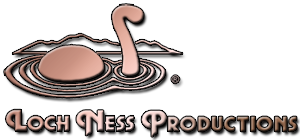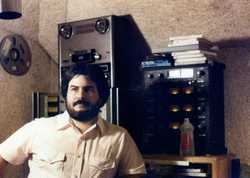Infinite Light
Soar through infinitely deep space and time!
For many, space music is best heard in the rarefied environment of the planetarium, an experience for those who appreciate the domed theater's soaring depictions of the cosmos. The thrill of all-encompassing visual and aural experiences is complemented by a music all its own.
Unquestionably the most prolific composer for the medium, Mark C. Petersen's name is synonymous with planetarium music. He has recorded and produced soundtracks for more than 60 planetarium shows. Mark has also performed live in concerts at major planetarium facilities in the U.S. and the U.K. Tens of thousands of Geodesium albums have been sold to planetaria and individuals in more than 67 countries worldwide.
The planetarium is the major medium he has composed for since 1975, and according to Mark, it inspires much of his work. "I create music as a major part of the audio-visual experience of the modern planetarium show. It complements and enhances the immersive environment we encounter under the dome."
Mark offers these reflections on the album's tracks:
This is the long-promised drifting, ambient album. Unlike all the previous albums that feature structured forms and recognizable melodies, this is the most ethereal, the floating one. No catchy tunes, no hooks, no pop chord progressions.
Deep Space Sojourn is from the planetarium show Lightwaves, recorded for the St. Louis Science Center's McDonnell Planetarium in 1986. This was quite a unique show; set aboard an interstellar craft with a sentient computer as the main character (the human crew was in hibernation). Kadee-1 encountered another robot craft called Seeker. It was about to fall into a black hole, and Kadee attempted to convince it to alter course. The entire show took place from the ship's control room, so it wouldn't have made sense to record different music selections when we never left the bridge. So I figured Kadee might have had the 24th-century equivalent of background music playing while working, and that's what this track is. I followed subtle shifts in mood as the dialog between the two ships computers went along. Toward the end, I brought in a somewhat ominous bass drone to accompany Seeker as it approached its doom in the black hole. Well, that's what I had in mind as I recorded this track; maybe you'll experience something or someplace completely different.
In 1983, the Boulder Valley Schools Planetarium asked me to create some long, light music selections. I rerecorded a piece from the Loch Ness Productions show All Systems Go!, called "Challenger" — which has now become Heart Of The Nebula. It does have a bit of a light rhythm, motoring-along feel, kind of like a heartbeat, I suppose.
Crystalline Clouds was also created at the same time. It was a direct-to-tape, no-overdubs performance on my Prophet-5, with bass from my Oberheim TVS-1. (The same sessions led to Probe and West Of The Galaxy — which both appeared on the third Geodesium album, West of the Galaxy.)
The title track for the album is somewhat of an anomaly. It wasn't recorded for any planetarium show in particular, but to accompany Deep Space Sojourn in completing the tape volume MUSIC BACK-PACK #13, in 1987. Like Crystalline Clouds, Infinite Light was a live improvisation, recorded in one pass directly to tape, without overdubs. It was all just sampled choir voices from the Emulator-II, with the longest possible envelopes and tape echo for sustain. I needed at least 20 minutes to fill the volume; I remember taking off my wrist watch in the studio and setting it next to the keyboard, so I could keep an eye on how long I'd been going. I bet you didn't know space music could be an endurance sport!
Thanks to John Wharton, Hal Donovan, and Jim Moravec for commissioning the projects that inspired the creation of this music. And, as always, the most special thanks to Carolyn Collins Petersen for her eyes, ears, support and love while this music was coming into existence.




